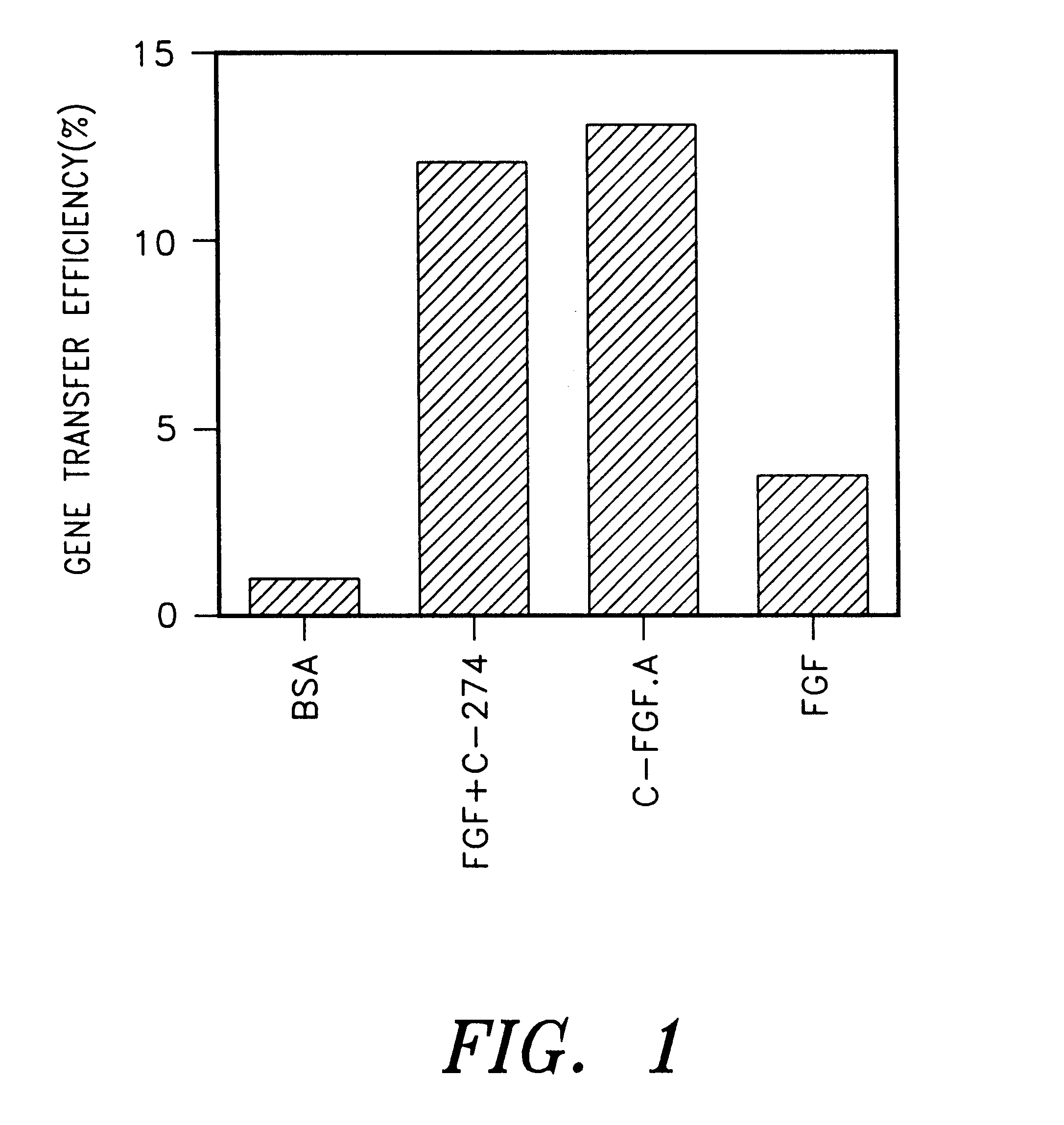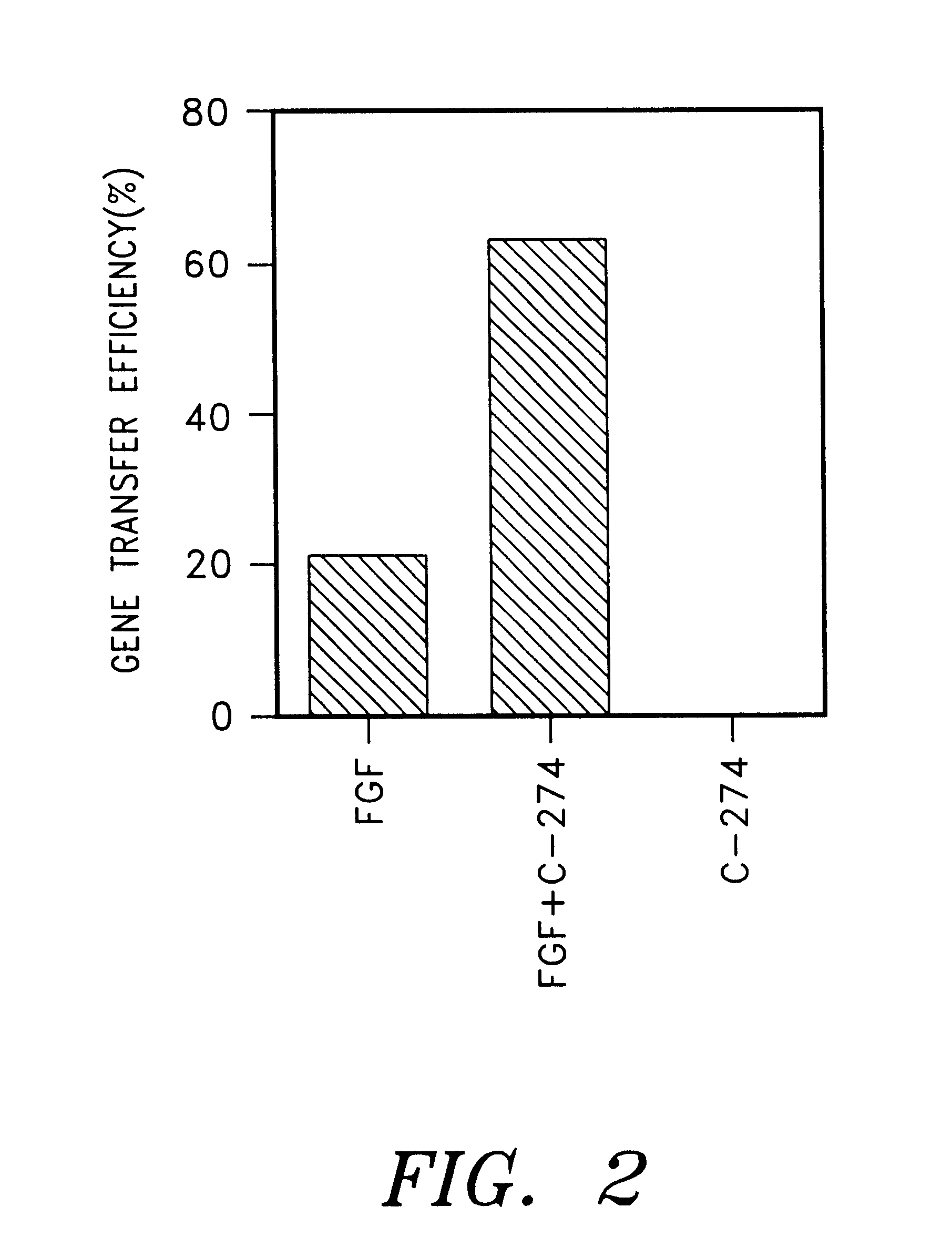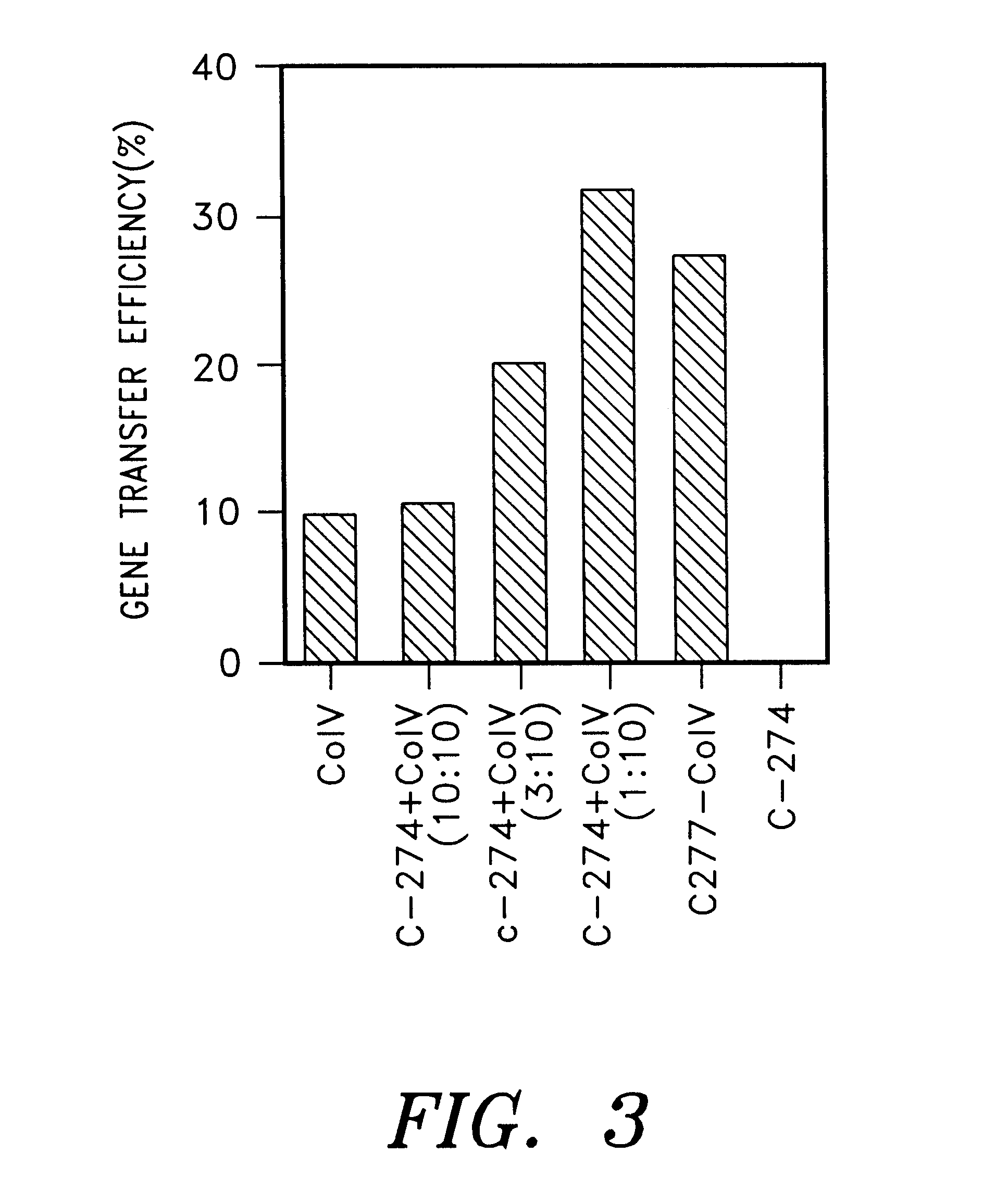Methods and kits for improving retroviral-mediated gene transfer utilizing molecules, or mixture thereof, containing retroviral binding domains and target cell binding domains
a retroviral and gene technology, applied in the field of methods and kits for improving retroviral-mediated gene transfer, can solve the problems of limited functional material to be used in the above-described gene transfer method, and achieve the effect of efficient and convenient gene transfer and cell transfer
- Summary
- Abstract
- Description
- Claims
- Application Information
AI Technical Summary
Benefits of technology
Problems solved by technology
Method used
Image
Examples
example 2
(1) Preparation of Polypeptide Derived from Fibronectin
The polypeptide derived from human fibronectin, H-271 (amino acid sequence is shown in SEQ. ID No. 1 of the Sequence Listing) was prepared from E. coli containing the recombinant plasmid containing DNA encoding the polypeptide, pHD101, i.e., Escherichia coli HB101 / pHD101 (FERM BP-2264) according to the method disclosed in U.S. Pat. No. 5,198,423.
The polypeptide, CH-271 (amino acid sequence is shown in SEQ. ID No. 23 of the Sequence Listing) was prepared as follows. Namely, Escherichia coli HB101 / pCH101 (FERM BP-2799) was cultured according to the method described in the above patent and CH-271 was obtained from the culture.
And, the polypeptide, CH-296 (amino acid sequence is shown SEQ. ID No. 24) was prepared as follows. Namely, Escherichia coli HB101 / pCH102 (FERM BP-2800) was cultured according to the method described in the above patent and CH-296 was obtained from the culture.
The polypeptide, C-274 (amino acid sequence is sho...
example 3
(1) Gene Transfer Using Mixture of Functional Materials
The following experiment was carried out to investigate the effect on the gene transfer in case of immobilization of a mixture of a cell binding material and a retrovirus binding material on a plate. First, each polypeptide tide was immobilized on a plate by using 32 pmol / cm.sup.2 (1.5 .mu.g / cm.sup.2) of C-FGF.A, a mixture 32 pmol / cm.sup.2 (1 .mu.g / cm.sup.2) of C-274 and 32 pmol / cm.sup.2 (0.5 .mu.g / cm.sup.2) of FGF or 32 pmol / cm.sup.2 (0.5 .mu.g / cm.sup.2) of FGF (Becton Dickinson) according to the same manner as described in Example 2 (9). After pre-incubating 2 ml of a virus supernatant containing 1,000 cfu of PM5neo virus in respective plates and a control plate coated with BSA at 37.degree. C. for 30 minutes, the plates were thoroughly washed with PBS. To each of these plates was added 2 ml of DMEM medium containing 2,000 NIH / 3T3 cells and incubated at 37.degree. C. for 2 hours in the absence of polybrene. Non adhered cells w...
example 4
(1) Gene Transfer Using FGF and C-FGF.A
The effect of FGF (Becton Deckinson) and the polypeptide represented by SEQ. ID No. 4 (C-FGF.A) on retrovirus infection was investigated by NIH / 3T3 cell colony forming assay. Namely, assessment was carried out according to the same manner as described in Example 2 (9) by immobilizing FGF (132 pmol / cm.sup.2, 2.25 .mu.g / cm.sup.2) and C-FGF-A (133 pmol / cm.sup.2, 6.3 .mu.g / cm.sup.2) on plates, respectively, and immobilizing BSA on a control plate. To each plate was added 2 ml of a virus supernatant containing 1,000 cfu of PM5neo virus and pre-incubated at 37.degree. C. for 30 minutes, followed by thoroughly washing with PBS. To this plate was added 2 ml of DMEM medium containing 2,000 NIH / 3T3 cells and incubated at 37.degree. C. for 24 hours, followed by incubation in a selection medium containing 0.75 mg / ml of G418 for 10 days. Colonies were stained and counted. The results are shown in FIG. 9. In FIG. 9, the abscissa indicates the functional mate...
PUM
| Property | Measurement | Unit |
|---|---|---|
| pH | aaaaa | aaaaa |
| temperatures | aaaaa | aaaaa |
| temperatures | aaaaa | aaaaa |
Abstract
Description
Claims
Application Information
 Login to View More
Login to View More - R&D
- Intellectual Property
- Life Sciences
- Materials
- Tech Scout
- Unparalleled Data Quality
- Higher Quality Content
- 60% Fewer Hallucinations
Browse by: Latest US Patents, China's latest patents, Technical Efficacy Thesaurus, Application Domain, Technology Topic, Popular Technical Reports.
© 2025 PatSnap. All rights reserved.Legal|Privacy policy|Modern Slavery Act Transparency Statement|Sitemap|About US| Contact US: help@patsnap.com



